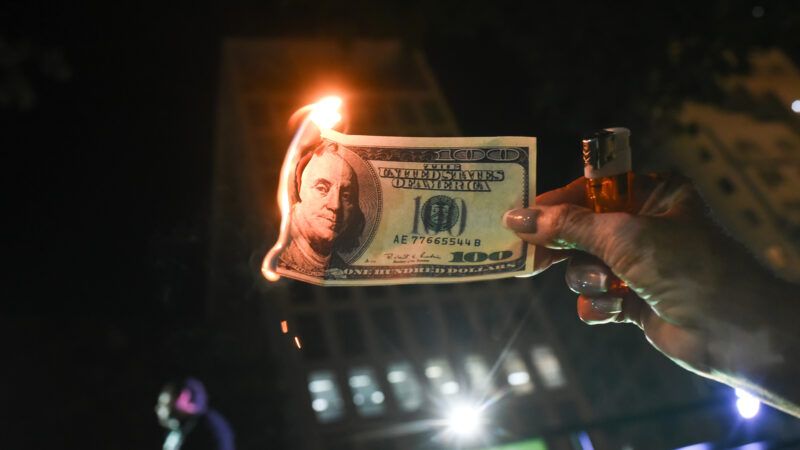Soaring Wholesale Prices Mean Higher Inflation Is Coming. Are Tariffs To Blame?
New producer price index data suggests domestic companies are not eating the cost of Trump's tariffs.

A key indicator of coming inflation is flashing bright red right now—and tariffs are likely a big part of the reason why.
Department of Labor data released Thursday morning showed a spike in wholesale prices across the economy during July. Overall, the producer price index (PPI), which measures the prices paid to domestic producers for their output, climbed by 0.9 percent last month (well above expectations) and 3.3 percent on an annualized basis. A few categories saw particularly large increases. Wholesale prices for food, for example, rose by 1.4 percent, while wholesale prices for consumer electronics increased by over 3 percent.
There are two important things to keep in mind here. First, as I noted above, the PPI measures prices paid to domestic producers. If it were true that the higher costs of tariffs were paid entirely by foreign producers or that American companies were eating the cost of the tariffs—two claims the Trump administration has repeated made—then you would not expect to see any tariff-related impact on the PPI.
Of course, that's not how things work in the real world. Lots of domestic products rely on imports of raw materials and intermediate goods. You can't make a chocolate bar without cocoa beans, for example, and over half of all imports are things that domestic businesses use as inputs.
Economists have warned that tariffs would increase the cost of importing component parts and force domestic firms to increase the prices they charge for their outputs. That seems to be exactly what today's PPI report shows.
Second, the PPI is often seen as an advance warning system for higher inflation at the consumer level—because higher prices at the wholesale level will likely be passed along at the retail level.
That's exactly what happened a few years ago. The PPI began showing a month-over-month change of around 1 percent in early 2021, before eventually climbing to a recent high of 1.7 percent in March 2022. Consumer prices followed suit, ultimately peaking in June 2022.
That doesn't mean that we're necessarily heading for a repeat of the runaway inflation of a few years ago. One particularly bad inflation report could be an aberration, but it could also be a warning sign. And keep in mind: This report shows the price increases from July, which means the higher tariffs imposed in early August are not a factor here.
Tax increases are always paid by people, in one form or another. Trump's tariffs are a massive tax increase, and the consequences are starting to come into view.
